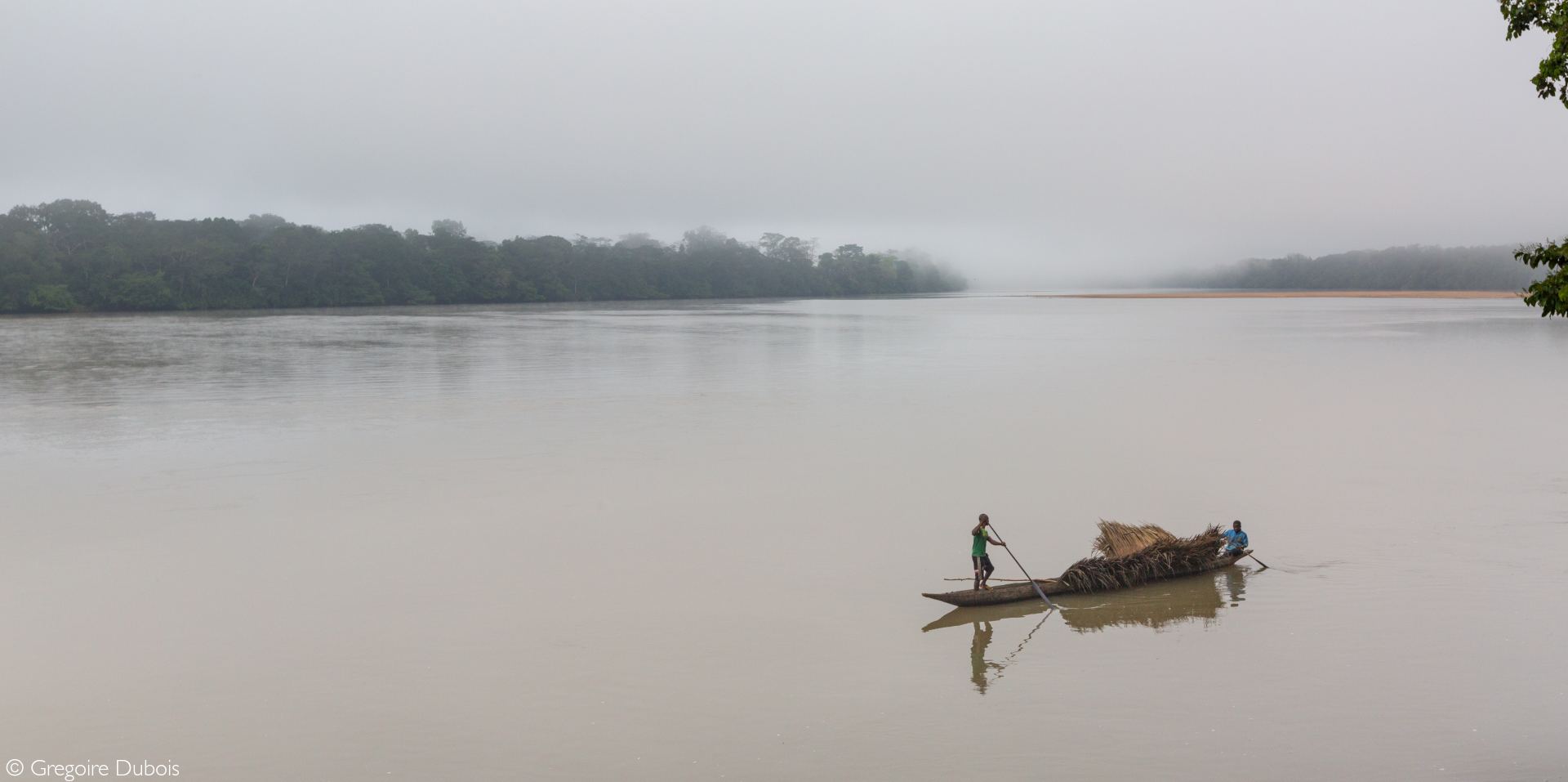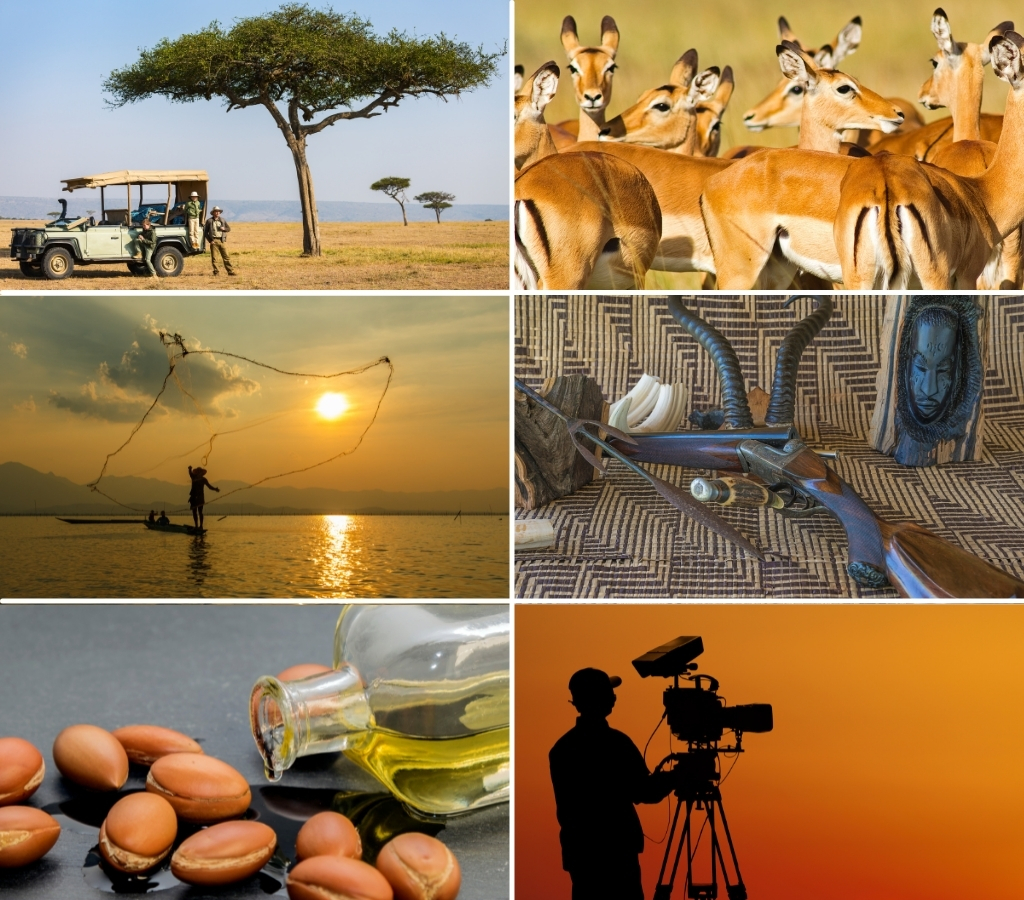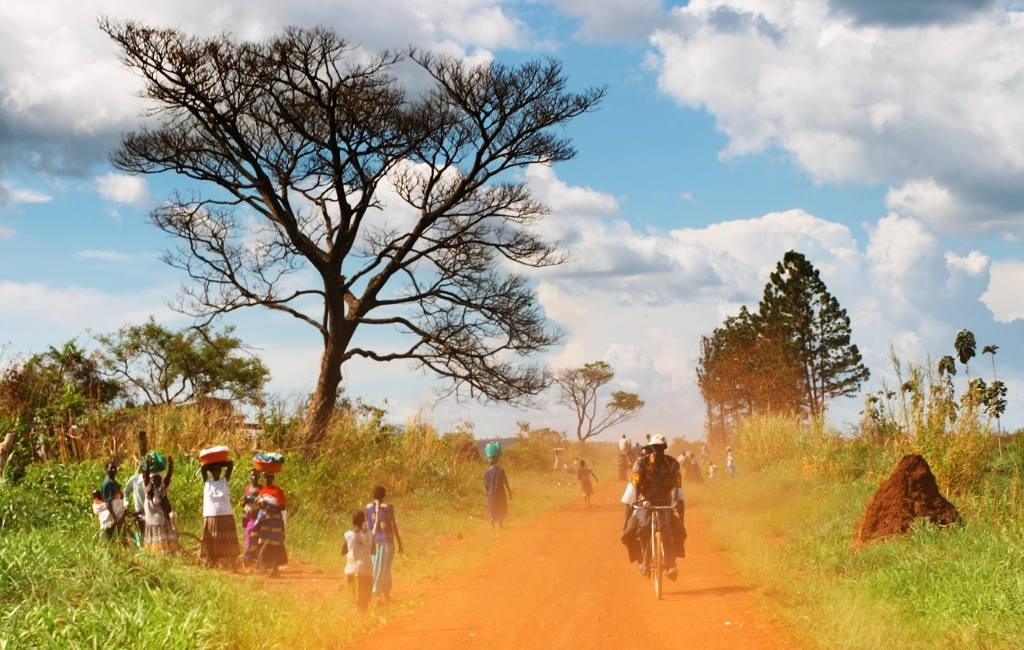Posted by: Sue Snyman
In March 2021, the School of Wildlife Conservation (SOWC) at the African Leadership University published a report - State of the Wildlife Economy in Africa - based on research to determine the value of wildlife in Africa. The goal: to encourage more public and private investments in natural landscapes to improve conservation outcomes and support economic development.
Africa possesses extraordinarily rich and diverse wildlife resources. They comprise the planet’s largest mammal species assemblages, second-largest tropical rainforest and three of the most productive marine ecosystems. Africa’s wild resources – its wildlife (fauna and flora, marine and terrestrial) and its natural landscapes are, however, largely not recognised for their economic, livelihood, and health contributions. And they should be, as should ecosystem services linked to wild resources such as agriculture and commercial forestry.
Given that the Global Risks Report has ranked biodiversity loss as one of the top five global risks in the next ten years (WEF, 2019), it is critical that governments invest in protecting biodiversity. This will stimulate development by supporting the growth of the wildlife economy, increasing revenues and employment. Investments in conservation deliver competitive returns compared with other mainstream sectors. Therefore, African governments must step up to create an enabling environment for investment in the sustainable use of wildlife and natural landscapes. This is especially important given how many local livelihoods and macro-economies are tied to and reliant on wildlife and other natural resources.

Transporting harvested grass in the Central African Republic
How we did it
The wildlife economy is defined as: The use of wildlife, both plants and animals (marine and terrestrial), as an economic asset to create value that aligns with conservation objectives and delivers sustainable growth and economic development. We chose to focus on what we termed the “Big Five” wildlife economy activities, which are:
i) ecotourism;
ii) hunting (including some aspects of fishing);
iii) wildlife ranching;
iv) non-timber forest products; and
v) the carbon market.
All activities covered had to meet conservation objectives and contribute to sustainable development. We attempted to cover the whole of Africa but, given the inconsistency and lack of robust data, we chose five case study countries (Gabon, Ghana, Kenya, Rwanda and South Africa) for more detailed examples.
The final report extended to some 430 pages, involved more than 65 people, and took 12 months to prepare.
The report includes:
• a broad socio-economic overview of Africa, to illustrate the importance of the wildlife economy in a socio-economic context;
• an overview of the current state of the “Big Five” activities across Africa;
• an overview of the policy and regulatory environment of the wildlife economy;
• the five case study countries;
• a chapter on the direction of the wildlife economy in terms of the status and trends in African conservation, as well as the potential, and
• the final chapter looks at enabling and supportive factors for successful wildlife economies
The importance of investment in conservation/wildlife (the asset base of the wildlife economy) is highlighted throughout.

Pillars of the African wildlife economy. Clockwise from top left: Ecotourism; wildlife ranching; sport hunting; wildlife estates, film and photography; non-timber forest products (Argan oil); fisheries.
State of the Wildlife Economy in Africa
In terms of the asset base for the wildlife economy, savannahs, grasslands, and shrublands are the most protected biomes in Africa, while lakes are the least protected. The report presents ten main conservation trends that impact wildlife economies’ viability and potential (see Chapter Five of the report for more on these trends).
Despite the lack of regional data, there are several examples illustrating the value and importance of wildlife at local and national levels. For example:
Ecotourism
Overall, in 2019, travel and tourism in Africa contributed a total of 8.5% to Gross Domestic Product (GDP), as well as 24.6 million jobs (WTTC, 2020), with international tourism revenue in Africa totalling USD 38 billion in 2019, comprising 3% of global tourism receipts (UNWTO, 2019). Before the COVID-19 pandemic, Africa’s tourism industry was growing faster than its economy as a whole (World Bank, 2013, in Signe, 2018).
Interestingly, Africa still only receives a small amount (5%) of global tourism arrivals, indicating significant room for growth in the tourism economy (WTTC, 2020). The pandemic has also highlighted the importance of growing and diversifying domestic and regional tourism.
The wildlife safari industry in Africa is valued at between USD 12.4 billion (direct) and USD 42.9 billion (total) (UNWTO, 2020), though there are numerous data gaps in wildlife tourism data.
Wildlife ranching
According to Lindsey (2011), game meat farmers were generating approximately USD 23.7 annually in Namibia when he conducted his research. While, in South Africa, the sale of wild meat generates USD 56 million annually - USD 24 million from trophy-hunted animals and USD 32 million from culled animals (Taylor et al., 2016).
In Lindsey’s (2011) research, there was a positive correlation between wildlife biomass and employment, suggesting that more wildlife means more jobs. The size of the illegal game meat trade across Africa indicates the significant demand for game meat and the potential size of a legal game meat market.
Fisheries
The illicit trade in the marine resources of West Africa is estimated to cost the region nearly USD 1.95 billion across the fish value chain and USD 593 million per year in lost household income (The Africa Report, 2020).
However, fisheries and aquaculture still directly contribute USD 24 billion to the African economy, representing 1.3% of the total African GDP in 2011, even though 25% of all marine catches around Africa are still executed by non-African countries (de Graaf & Garibaldi, 2014).
The economic contribution of recreational fisheries for 11 West African countries totalled USD 152 million annually (Belhabib et al., 2016). The management of illegal, unregulated and unreported activities would increase revenues considerably!
Sport Hunting
Yasuda (2012) researched northern Cameroon and found that sport hunting generated approximately USD 1.2 million in the area in one season. It also provided profit-sharing and employment opportunities for local communities. In Namibia, direct revenues from trophy hunting were estimated to be approximately USD 27.1 million in 2016, with over 90% of trophy hunting fees generated on freehold lands (McClaren et al., 2019).
In Tanzania, in 2014/15, USD 16.23 million trophy hunting revenue accrued to the Wildlife Division in Tanzania and USD 28.3 million was earned in total private sector revenues from hunting (Booth, 2016). In South Africa, in 2018, local hunters contributed approximately USD 700 million (85%) and foreign hunters approximately USD 123 million, providing an estimated total of USD 823 million (Kitshoff-Botha, 2020).
For the eight countries (Botswana, Ethiopia, Mozambique, Namibia, Tanzania, South Africa, Zambia, and Zimbabwe) examined by Southwick Associates (2015), hunters spent USD 326.5 million annually between 2012 and 2014, with the estimated contribution to conservation through fees paid to landowners (private, community, and government) was estimated to be within the range of USD 26.7 million to USD 40.2 million each year.
Non-timber forest products (NTFPs)
In Africa, an estimated 867 million people – 67% of the total population – use NTFPs for subsistence or cash income (Timko et al., 2010). Argan oil from Morocco is the most expensive edible oil globally. Production has grown to 4,000 tonnes per year, while exports had grown from 1 tonne in 1996 to 1,387 in 2017 and 3,000 in 2019, earning USD 33 million annually (Charrouf & Guillaume, 2018). Production is projected to reach 20,000 tonnes (worth USD 2 billion in 2024) with significant economic benefits (Hexa Research, 2017, in Perry et al., 2018).
The value of honey produced in Africa increased from USD 159 million in 2005 to USD 384 million in 2016, with Ethiopia being the largest honey producer on the continent (FAOSTAT, 2020). The annual market value of medicinal plants in South Africa is USD 75-150 million (Street & Prinsloo, 2013), though a large part of this market is informal and therefore difficult to quantify.
In southern Africa, cross-border trade in mopane worms is estimated at USD 39-59 million annually (Baiyegunhi et al., 2016).
The Carbon Market
Nature can provide more than 30% of the climate solutions but historically has only received between 2-3% of global climate finance. In Zambia, approximately USD 2,3 million was paid to 13 chiefdom communities in the Luangwa Valley from the first year of payments under the Luangwa Community Forests REDD+ Project in 2020 (BioCarbon Partners, n.d.).
Wildlife estates, film and photography
Wildlife estates (eco-estates or game farms where people build houses and pay rates, etc) and film and photography, among others, also can contribute significant amounts to local and national economies and create jobs. This is, however, currently largely untapped.
The aggregation of data at a regional scale and even at a national level was not possible due to the inconsistencies. Still, the report shows that, despite these significant data gaps, the contribution of wildlife to economies is enormous! Imagine if we were able to capture and report on the total, tangible value.

Human beings and wildlife must often share the same resources
Recommendations
Some of the main recommendations of the report include:
• There needs to be supportive, enabling policy and legislation that allows for communities and the private sector to engage in, and benefit from, the wildlife economy. There must be transparency, accountability and general good governance at local and national levels that encourages private sector investment. It is unlikely that more policy is required. Rather, stronger leadership and public sector incentives must develop an enabling regulatory framework to unlock and diversify the wildlife economy.
• At the national and local level, more work is required in allocating ownership rights and use rights, regulation of wildlife production and trade, and rules to ensure inclusiveness and equity. The barriers to unlocking the potential of the wildlife economy are probably less about policy and more about the traditional resistance of governments and bureaucracies to change and innovation.
• Government support for protected and conserved area management, as well as investment in wildlife, is crucial. Along with expanding protected and conserved areas, there must be an improvement in the management effectiveness of existing and new locations. The wildlife economy also highlights that conservation need not be contained in designated conservation/protected areas.
• Governments, NGOs, and the private sector should build capacity and provide supportive institutions (including collaborative platforms and forums, regulatory bodies) for communities. They need partners who can provide the capital and expertise to help develop natural assets (land and/or wildlife) into marketable experiences or products.
• The wildlife economy is a dynamic and complex environment, with numerous stakeholders and institutions at different levels. To maximise the benefits, governments need strategies that provide direction, guidance and structural coordination to ensure greater efficiency and effectiveness. Strategic partnerships are essential, as is the breaking down of silos between different government departments, institutions and related policy, to streamline efforts for a greater, more positive and sustainable impact.
• There should be institutional arrangements for benefit sharing to ensure greater equity and to garner support from local communities. • In line with the above, promoting collaborative agreements and partnerships can maximise the relevant strengths of different partners, providing increased confidence to investors and attracting increased funding.
• Diversifying wildlife economy activities and products is vital to reduce risk, build resilience and engage more stakeholders (this has been further highlighted by the COVID-19 pandemic).
• The establishment of data collection and analysis protocols and/or systems for Africa, which allow for the collection of comparable data over time, would be useful for data-driven decision-making.

A functioning, sustainable wildlife economy is critical to Africa’s wellbeing
Conclusions
The majority of African countries have rich biodiversity, forming the asset base of the wildlife economy, and many have enabling policy and legislation for the wildlife economy. Unfortunately, there are frequently issues with the implementation, monitoring and evaluation of activities. The rules of law, accountability and general good governance are essential for an effective and efficient wildlife economy. The same goes for strengthening the capacity (both human and financial) of protected and conserved area management to preserve and grow the asset base. Furthermore, creating an enabling environment for private sector partnerships and foreign direct investment is crucial for growing Africa’s wildlife economies more sustainably.
The scale and scope of the wildlife economy in Africa are not fully understood, mainly due to a lack of good quality data. The State of the Wildlife Economy in Africa report has attempted to provide an important baseline, especially in terms of the ‘Big Five’ wildlife economy activities and country case studies included. Future research looking at the value of different wildlife economy activities should be coordinated across institutions, using the same data collection tools and analyses to allow for comparisons across countries and over time. Given that you can’t manage what you don’t measure, we must measure the value of wildlife to manage it sustainably.


